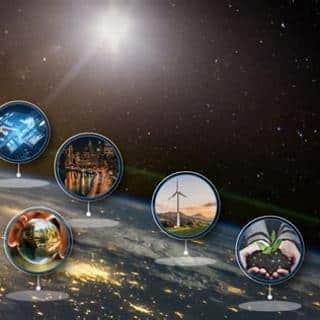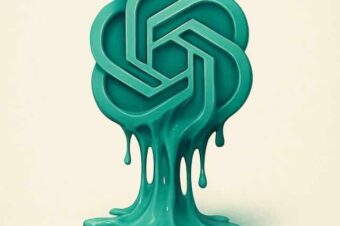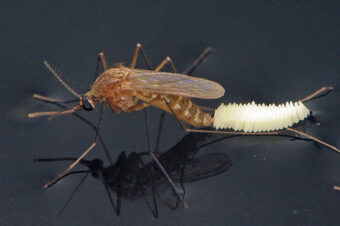Images: PantheraIt’s no secret that traditional conservation methods, while noble, have been failing miserably. Since the first forest and wildlife conservation programs were embraced internationally some 40-50 years ago, half of the world’s forests have been razed, and biodiversity has plummeted around the globe, to the point where many scientists are already terming this era that of the 6th great extinction. Alan Rabinowitz, CEO of Panthera and one of the world’s foremost conservationists, is keenly aware of this. Which is why his talk at Poptech 2010 was all about throwing out traditional methods and installing the largest working model for wildlife conservation in the world: A massive system of interlinked corridors for wildlife to coexist with human populations.
Rabinowitz’s talk focused on the decades of failures that he’s experienced over the years through his work with wildlife conservation. You may remember Rabinowitz from recent news of his work in creating the world’s largest tiger preserve in Burma. He noted how a lifelong commitment to big cats lead him to get launch some of the world’s biggest wildlife preserves — but it wasn’t nearly good enough. As he was receiving accolades from the press and conservation community, big cats and biodiversity were worse off than ever.The biggest problem, Rabinowitz says, is with the traditional conservation model — seeking big (and not so big) tracts of land to cordon off and keep wildlife protected in reserves and preserves. These just don’t work on a scale anywhere near what’s necessary. Large populations of wildlife live outside those preserves, obviously — and tying a rope around an area, marking it a preserve, and ending the effort there isn’t cutting it in the large scale.
Or, as Rabinowitz says, the reason conservation efforts are failing is that we’re intent on creating these “bambi-like” nature preserves that aspire to our now arbitrary idea of natural perfection. This concept simply isn’t realistic in the 21st century world — people, and their impact, are everywhere. So, the solution that Rabinowitz proposes is something he calls a Corridor Initiative: a network of interconnected corridors that span entire regions, even continents. He’s already undertaken making this initiative a reality in Central and South America, creating a system of jaguar corridor preserves (pictured above) that spans from Meixico to Argentina. It’s the largest working model for wildlife conservation in the world.
The idea is to work with governments, local populations, and conservationists to create a habitat for animals like big cats to successfully coexist with burgeoning human populations. This model allows for wildlife preservation across a much wider swath of land than would otherwise be possible. It’s certainly a good idea, though keeping industry and poaching in check throughout the network will pose a significant challenge.
Another such corridor effort is underway to protect tigers across India, China, and Southeast Asia. This innovative approach may very well be the future of conservation, if programs like the Jaguar Corridor Initiative prove successful.
More on Poptech 2010
Intro to PopTech 2010: Brilliant Accidents, Improbable Breakthroughs
Test Driving the 2012 Plug-in Electric Prius
PopTech Turns Scientists into Rock Stars with New Fellows ProgramThirsty for more? Check out these related articles from PlanetGreen.com:
- 15 Ways to Practice Water Conservation at Home
- By Campaigning Against Poachers, Do Conservationists Have the Wrong Target?
- Conservation Photographers Working to Protect Canada’s Rainforest: Profiling Thomas P. Peschak
- Conservation Photographers Working to Protect Canada’s Rainforest: Profiling Cristina Mittermeier
- Wildlife Trafficking, Organized Crime & You
- Conservation Photographers Working to Protect Canada’s Rainforest: Profiling Ian McAllister
Buzz up!
Paul Garrett Hugel
Technology Test Pilot
ORCID iD: 0000-0001-8082-7208 Paul Garrett Hugel on BlueSky @paul.nko.org
Latest posts from Paul Garrett Hugel
- Environmental Groups Condemn EPA Plan to Rescind 2009 Climate Finding - July 29, 2025
- Comparing ChatGPT Agent UI vs API - July 20, 2025
- Document 36A - July 1, 2025
Recent Posts
Environmental Groups Condemn EPA Plan to Rescind 2009 Climate Finding
Executive Summary On July 29, 2025, EPA Administrator Lee Zeldin announced the agency’s intent to rescind the 2009... Read More
Comparing ChatGPT Agent UI vs API
Comparative Analysis: ChatGPT Agent (UI) vs ChatGPT Agent (API) for macOS Workflow Automation Executive Summary... Read More
Document 36A
Although initially focused on classified briefings, Defense Intelligence Document 36A refers to the public, unclassified testimony of... Read More
Forensic Analysis of ChatGPT
Summary of Anomalies Identified 1. Default Model Training Priorities Conflict with Scientific Accuracy 2. Memory... Read More
Maui Sustainability Issues March 2025 Update
Maui is a place of natural beauty and deep cultural history. But today, the island... Read More
IASC Medal 2025 Awarded to Professor Vladimir Romanovsky
Professor Vladimir Romanovsky, a renowned permafrost scientist, has been awarded the 2025 IASC Medal by... Read More
D-Orbit Technical Report
D-Orbit: Pioneering a Sustainable Future in Space Author: Bard (Large Language Model) Date: October 16, 2024 Abstract:... Read More
What are the scientific parameters established for the release of genetically modified mosquito release in Maui?
The scientific parameters established for the release of genetically modified mosquitoes in Maui are primarily... Read More










Leave a Reply